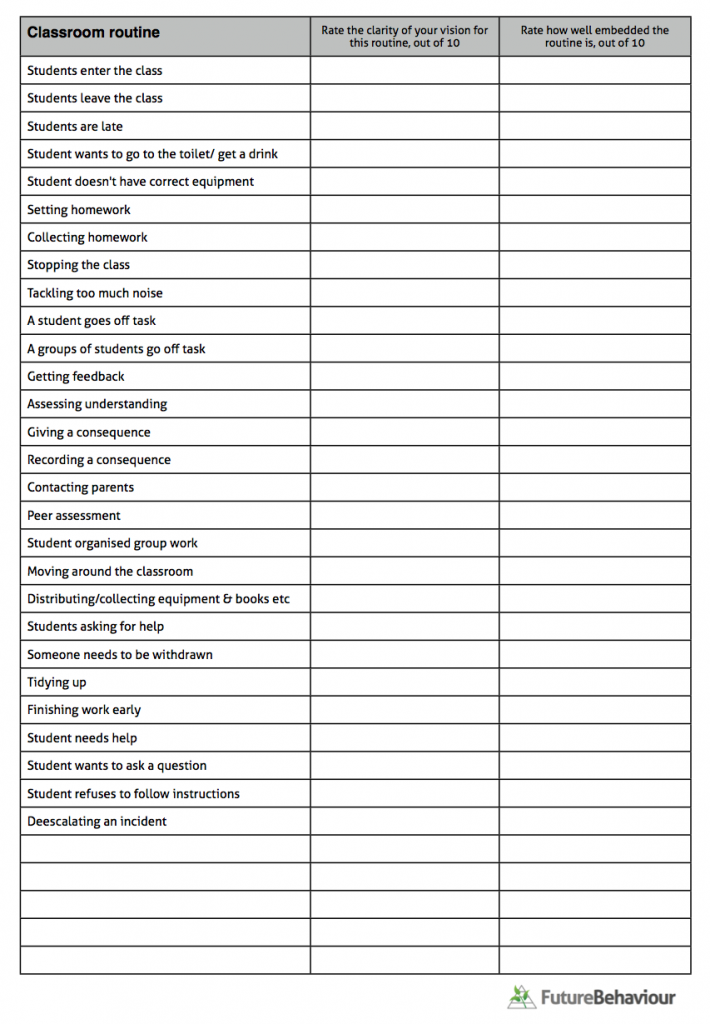The simplest of all behaviour management techniques
Another easy win
No brain surgery this week, just the very simplest of all behaviour management techniques. Want to know what it is?
Well, it involves a piece of paper and a pen and 10 minutes of your time. That’s it.
I just want you to think about it.
To manage behaviour you first have to decide on the behaviour you want
So often, we can forget about this. The best practitioners have a natural ability to visualise how they want day-to-day classroom procedures to look.
Can I go to the toilet?
Here’s a simple example. Do you have children in your class/es asking you whether they can go to the toilet or perhaps fill up their water-bottle? I’m guessing you do.
There are a few options with this scenario:
1. We don’t let anyone go. Bit mean that one.
2. We let everyone go as many times as they jolly well want to. “Just been 10 minutes ago? Of course you can go again!” Some children may take advantage.
3. We let some students go sometimes. A popular choice this one. However the problem occurs when highly paid teaching practitioners become toilet arbiters. The toilet arbiter needs to consider all the variables: time of day, distance from last break, distance to next break, whether they’ve already been in that session, whether there is a medical reason, whether they go to the toilet most sessions of most days, whether they go and return quickly or unbelievably slowly etc etc. This is quite time-consuming and often you lose both ways. You begrudgingly let them go with the sneaking suspicion that they are just having a little break or you feel guilty because you don’t let them go and you fear they may explode.
There is another way
Decide in advance when it is appropriate and reasonable for students to go to the toilet. So in a secondary school, it could be that you let everyone go to the toilet but you record it (this takes time but it also saves time). If the same student requests a toilet break again that term (for example), you request that they spend 5 minutes catching up with the work they’ve missed. This is not a punishment. It is a real consequence. (Find out the difference here.) They missed some lesson time so it is reasonable to ask them to make some time up. No more, “Go on then but make it snappy”s. It’s a procedure. It’s just what happens. You thought about it in advance. You know it’s reasonable and you explain fully the reason for having this procedure in place. (Don’t forget about Fair Process.)
Take a look at your other (non-toilet related) routines and procedures
You’ll have some already, no doubt. However, can you add to them and can you visualise an easier way to navigate them?
Below is a downloadable checklist with lots of classroom routines. Take 10 minutes to reflect on them. Reflecting on your own practice is one of the simplest behaviour management techniques there is. It’s also very handy when someone comes in to your classroom to reflect on your practice for you. You’ll have done it already.
Next steps
1. Download the Classroom Routine Reflection Checklist.
2. Fill in the numbers.
3. Choose some routines to focus on – you’ll find this easier now that you’ve reflected.
4. The best way to focus on them is to complete the FREE 50 Minute Behaviour Course.







